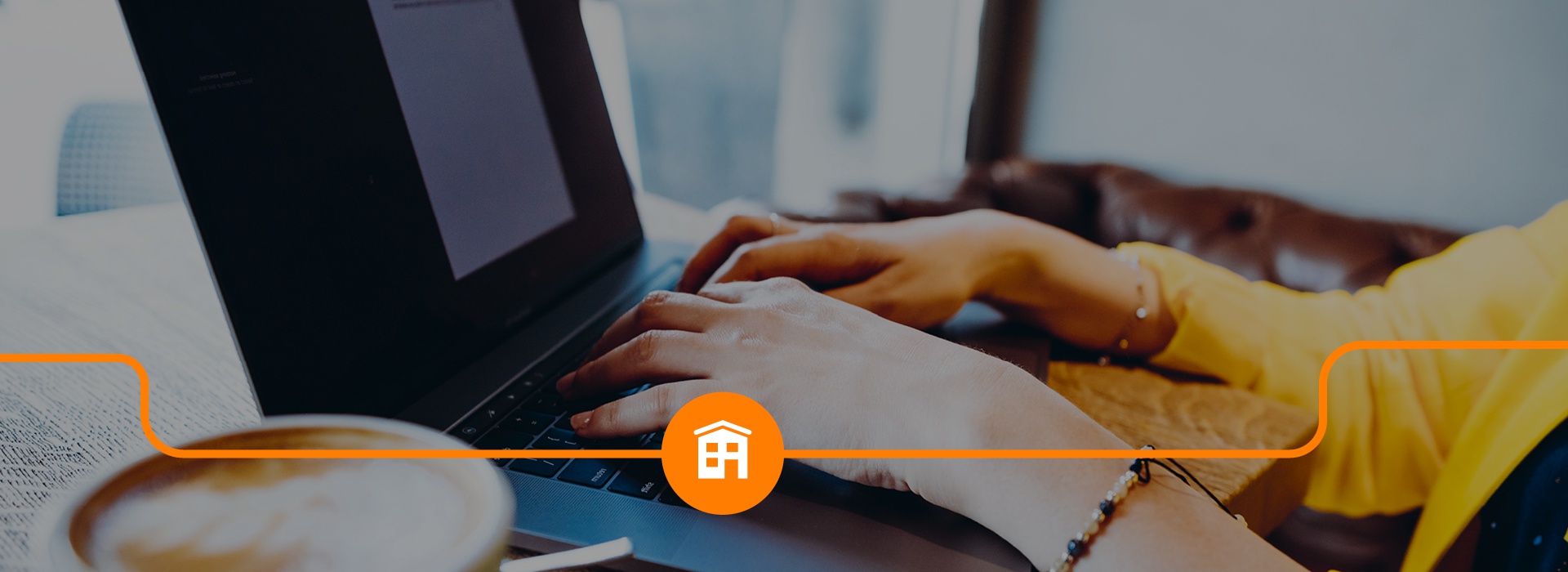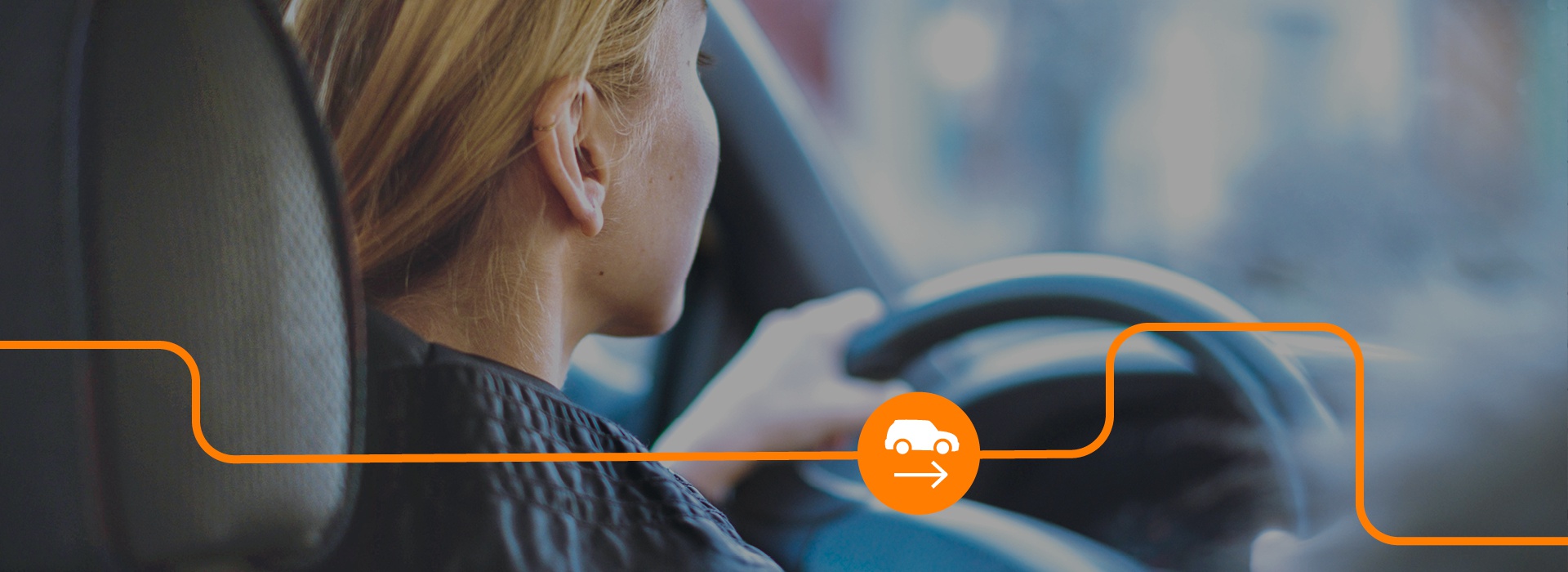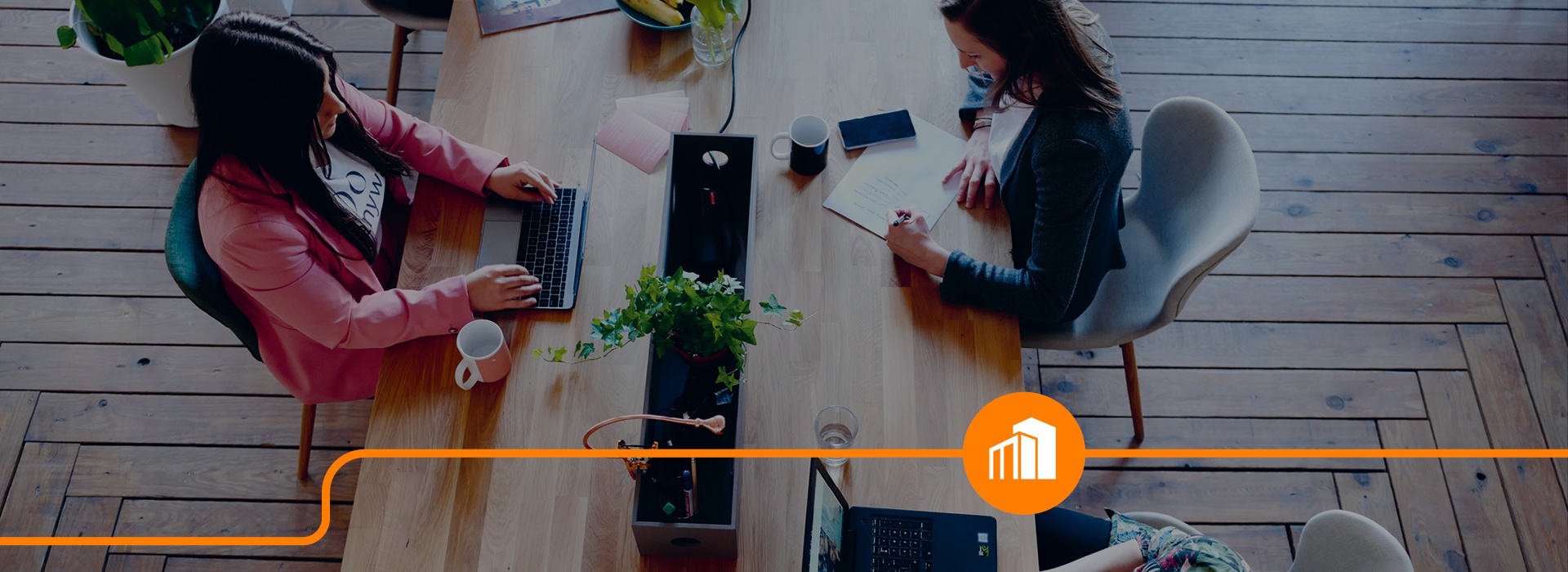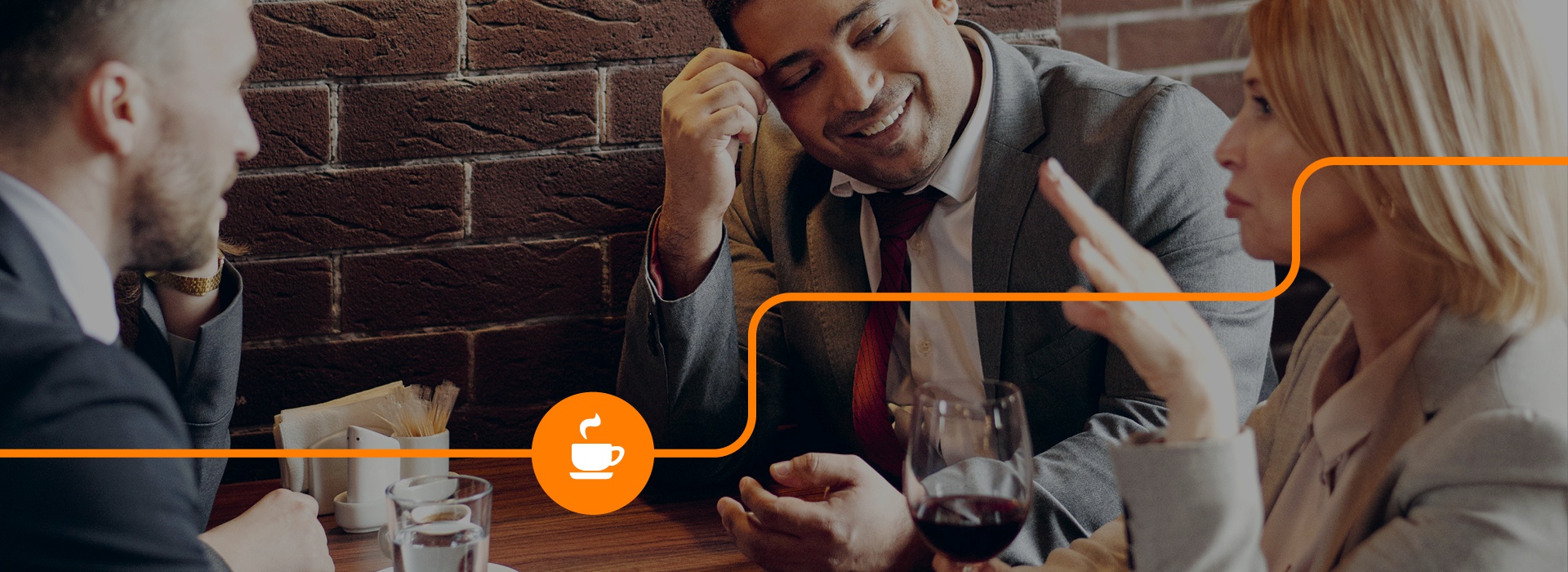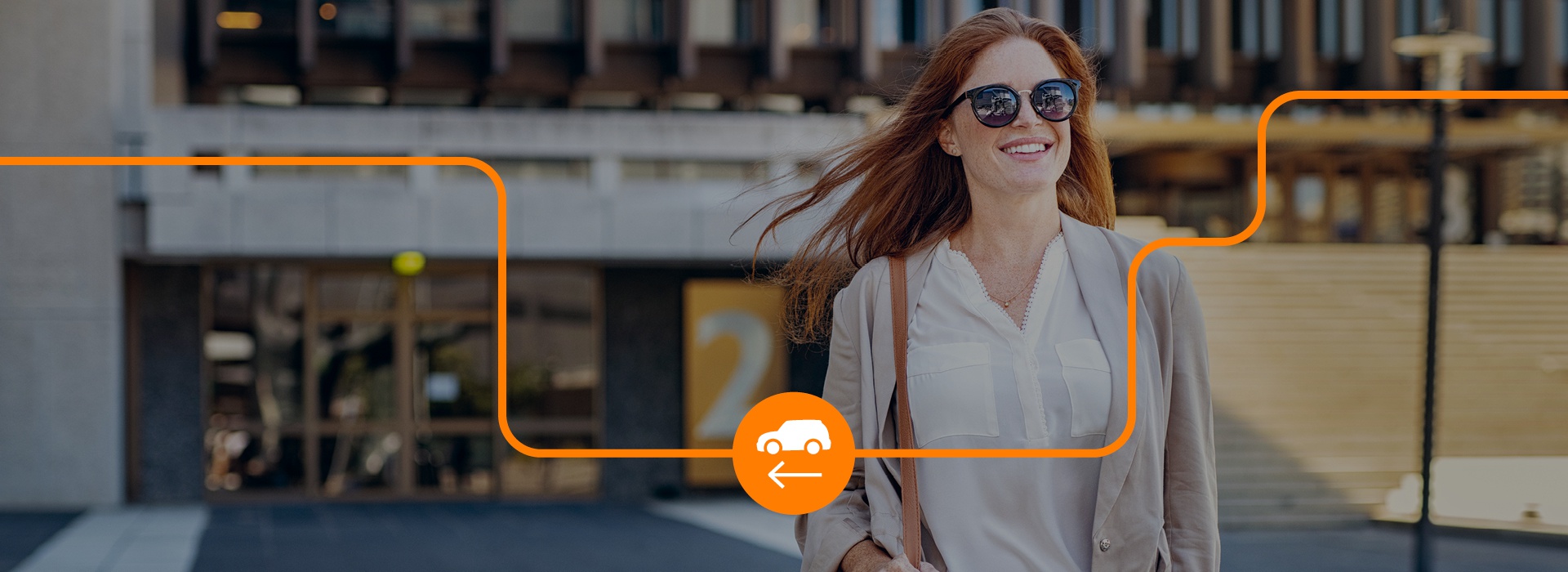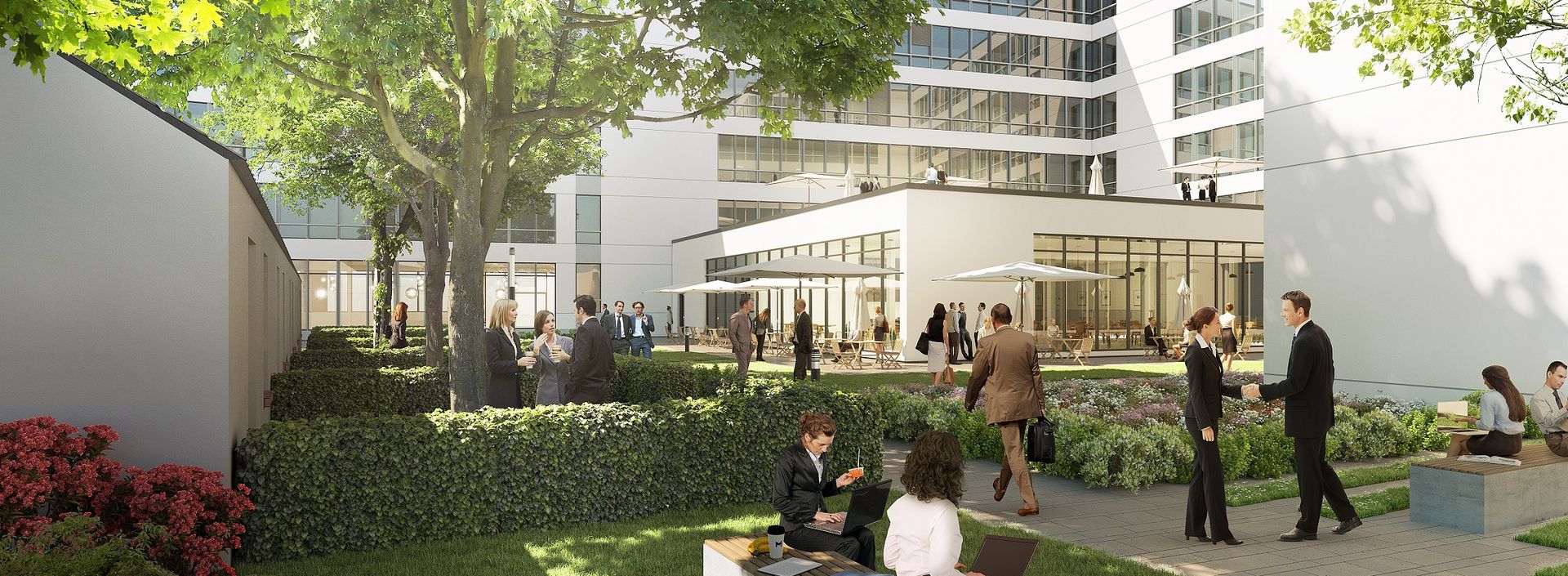
14.02.2022
Office of the future: How will we work after the pandemic?
work & liveBüro
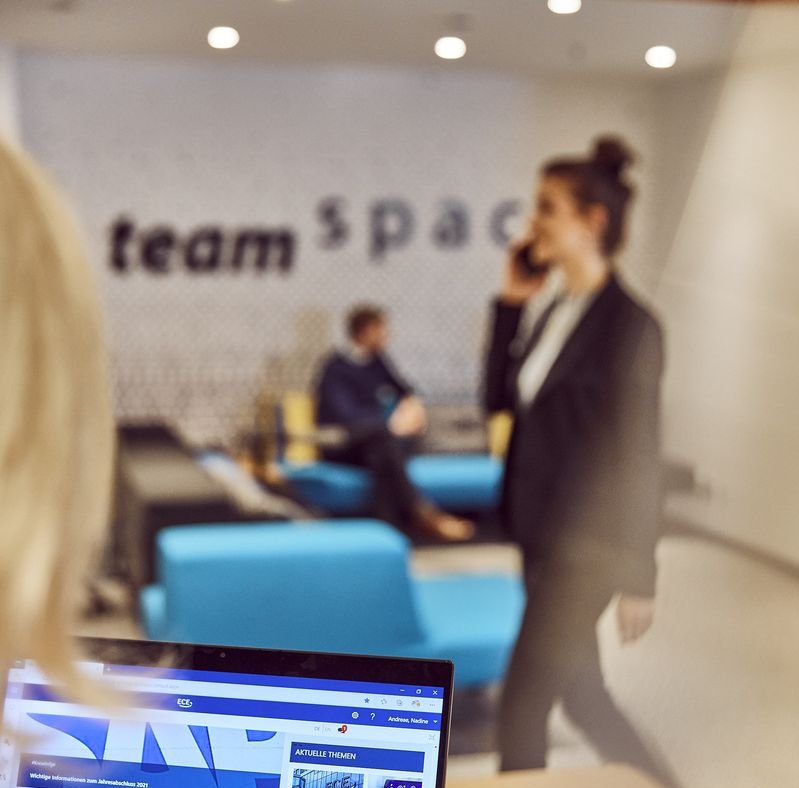
Daily work changed considerably at the start of the coronavirus pandemic for many people who work in offices. Most have set up a workspace at home, where they collaborate with their colleagues digitally. But how will the office look in the future? Will people continue to work from home after the pandemic, or will there be an increasingly hybrid form of working? Where will we work in the future, and what new office concepts will meet the flexible and modern needs of the working world?
Hybrid working is changing the culture of the workplace
It is possible that many companies will introduce a mixed model, known as “hybrid working.” This means that people will work in the office a few days a week and work from home the other days. For companies, this will result in a new workplace culture that will have an impact on future office environments in buildings.
And this trend will also play an important role during the construction of new office properties. With a modern workspace design, hybrid working can combine the advantages of working from home with those of working in the office.
These are the advantages and disadvantages of working from home
The advantages of remote work have been made clear by the experiences during the pandemic:
- Greater concentration
- No commuting
- Better compatibility of private and professional life
- Flexible structuring of daily activities
But even before the coronavirus pandemic, many companies relied on their employees’ personal responsibility – and allowed them to work where they wanted, for example, using mobile devices, cloud solutions and MS Office 365.
However, after a year of working almost exclusively from home, disadvantages have also become apparent. Many miss the opportunity to engage directly with coworkers, customers, or service providers, to collaborate on creative solutions, to network, and to experience and develop the company’s culture. Furthermore, working from home can also increase the risk of social imbalance. Those who earn more and can, for example, afford a comfortable living situation may work more productively from home than people with a lower income living in cramped conditions.
Completely eliminating the office is therefore not an option for many. Now the job is to leverage the best of both forms of work for our collective success. Many companies intend to establish a hybrid work model in the future that combines in-person and remote work.
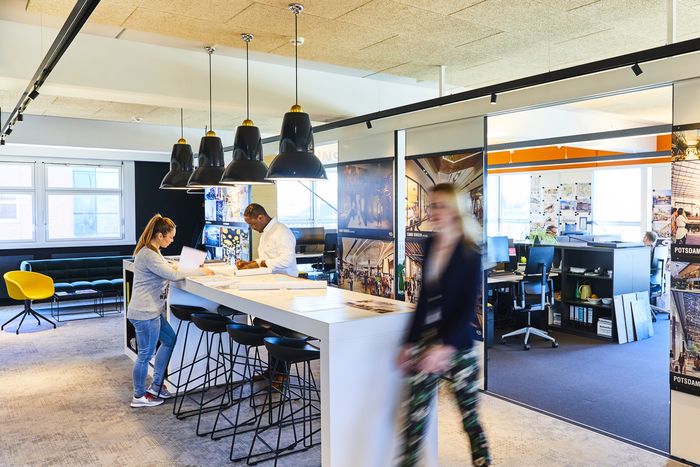
The modern office combines collaboration and desk work
What role will the office play in the working world of the future?
Networking with colleagues, initiating creative processes together, learning from each other in workshops, and exchanging ideas and opinions –many people have particularly missed the office as a sort of “modern campfire.” According to a study by the Technical University of Darmstadt, the office will remain the main place where people work on a daily basis over the long term.
How a modern office promotes corporate culture
Modern offices continue to be viewed as an asset to help attract the best skilled workers. Many companies therefore continue to see the office as the place where productive interactions take place and the corporate culture is cultivated and refined. This results in the requirements that future office space design must meet.
Flexible office concepts for modern collaboration
A modern office involves eliminating any ties between a workstation and a single employee and offering different types of workstations based on the nature of the job. This has reduced the number of traditional offices, because they are only suitable for a certain type of work.
On the other hand, more space with other functions is needed for other purposes, such as conference rooms and communication areas with the appropriate equipment and technology. The concept also places greater emphasis on areas that foster social interaction. Instead of functional break rooms, the office space features lounge areas for informal get-togethers, shared meals, or simply to sit and chat with coworkers.
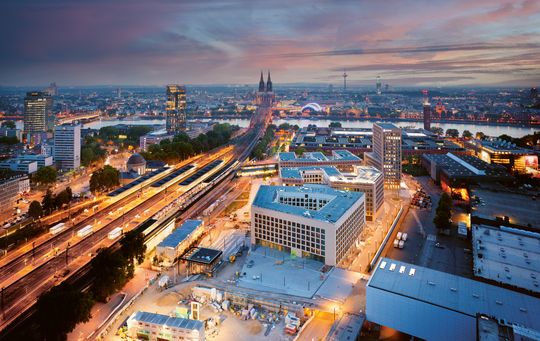
Top-class district development: MesseCity Cologne (© Ingo Fischer)
New office spaces in MesseCity Cologne
ECE is currently developing several new office complexes, including the second phase of construction at MesseCity in Cologne. A total of six office and hotel properties with space for food and beverage concepts, service providers, and retail outlets are currently under construction in the business district on the Rhine being developed by STRABAG RE and ECE located in the direct vicinity of the Koelnmesse exhibition center. The Zurich Insurance Group is the largest tenant in the already completed section of the development, and the company moved into its new headquarters in the popular Deutz district at the end of 2019. The flexibly designed office buildings offer the company’s approximately 2,800 employees modern workspaces and an attractive environment.
Construction of the fifth building section began in the spring of 2021. The 15-story high-rise office building named “Centraal” has been leased by the auditing firm KPMG. For the company’s Cologne branch, an innovative office design is being implemented there that was created by KPMG itself.
Modern office concepts for KPMG
Well before the pandemic, KPMG had already put its office concept to the test. In the process, it became apparent that the company wasn’t using its existing office space efficiently. The reason for this was that the workstations were permanently assigned to individual employees depending on their job description and status.
Flexible working options at Zurich's corporate headquarters (© Lukas Roth)
Zurich: Pleasant working atmosphere with a view of Cologne Cathedral (© Lukas Roth)
Concentration meets inspiration: KPMG's office concepts (© KPMG)
KPMG relies on spatial diversity for different needs (© KPMG)
In addition, many employees were often on the road due to their jobs, and the offices assigned to them were poorly utilized. In response to this, KPMG developed a comprehensive modern workplace concept for its offices and has already implemented it at several locations.
“It gives employees the ability to switch workstations as their activities change, or to choose the type of space they need during the workday. After all, it’s not the workplace that shapes the way we work, but the other way around,” explains Stefan Kiehn, who, as Head of Corporate Real Estate Management at KPMG AG, is responsible for implementing the new office environment.
Flexible, modern, smart: The requirements for the workspace of the future
In the workspace of the future, different types of workstations with different requirements will involve a high level of complexity when it comes to planning and construction. This means that when it comes to the quality of the office property, it isn’t just flexible space planning that plays a role. In addition, the building’s technical equipment must also be of the highest quality and meet the latest standards. For KPMG, for example, ceiling cooling systems are installed as standard equipment on every floor to ensure that the temperature of the rooms is kept in line with demand. This requires a special floor height that provides sufficient installation space.
Smart office: Pandemic-safe solutions for daily working
A company’s identity and collaborative culture are always also expressed through the buildings in which work is performed. As a developer of office properties, ECE therefore believes it has a duty to construct buildings in close cooperation with its customers that meet this demand and at the same time fulfill all the requirements of modern working environments. A central concept here is the “smart building.” The cornerstone of a smart building is building automation, which focuses on building and energy management through the use of control and monitoring technology.
Smart offices with the Internet of Things (IoT)
Through the use of IoT (Internet of Things), the building and all its functions directly interact with the user to enhance their experience. At the same time, the property’s objectified usage and consumption data is recorded, displayed, and made usable in the cloud through extensive evaluation and analysis options.
The objective of the innovative concept is to improve the well-being of employees and guests, enhance health and safety, optimize the use of space, reduce ancillary costs, and increase overall sustainability by reducing consumption.
How smart offices help during the pandemic
Against the backdrop of the coronavirus pandemic, particular consideration was given to measures that will continue to help protect employees and visitors from disease, minimize transmission routes, and prevent infections in the future.
Along the office customer journey, from early planning at home to arriving at the building to the time spent at the office, including breaks, and finally to the time of departure, the study investigated which analog, digital, and psychological components can be used to optimize, the visit to an office building.
Over the course of developing the Campus Hamburg office property currently under construction, ECE experts intensively explored the subject of smart offices and developed a forward-looking concept of how the technology of a smart office can be meaningfully supplemented by pandemic safety and health protection – with the aim of constructing a cutting-edge building.
